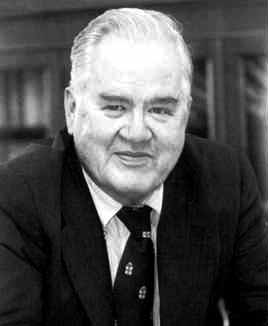<Back to Index>
- Statistician John Wilder Tukey, 1915
- Writer and Marxist Socialist Journalist Paul Lafargue, 1842
- Cossack Revolutionary Stepan Timofeyevich (Stenka) Razin, 1630
PAGE SPONSOR

John Wilder Tukey ForMemRS (June 16, 1915 – July 26, 2000) was an American statistician.
Tukey was born in New Bedford, Massachusetts in 1915, and obtained a B.A. in 1936 and M.Sc. in 1937, in chemistry, from Brown University, before moving to Princeton University where he received a Ph.D. in mathematics.
During World War II, Tukey worked at the Fire Control Research Office and collaborated with Samuel Wilks and William Cochran. After the war, he returned to Princeton, dividing his time between the university and AT&T Bell Laboratories.
Among many contributions to civil society, Tukey served on a committee of the American Statistical Association that produced a report challenging the conclusions of the Kinsey Report, Statistical Problems of the Kinsey Report on Sexual Behavior in the Human Male.
He was awarded the IEEE Medal of Honor in 1982 "For his contributions to the spectral analysis of random processes and the fast Fourier transform (FFT) algorithm."
Tukey retired in 1985. He died in New Brunswick, New Jersey on July 26, 2000. His statistical interests were many and varied. He is particularly remembered for his development with James Cooley of the Cooley – Tukey FFT algorithm. In 1970, he contributed significantly to what is today known as the jackknife estimation — also termed Quenouille - Tukey jackknife. He introduced the box plot in his 1977 book,"Exploratory Data Analysis". Tukey's range test, the Tukey lambda distribution, Tukey's test of additivity and Tukey's lemma all bear his name. He is also the creator of several little known methods such as the trimean and median - median line, an easier alternative to linear regression. In 1974, he developed, with Jerome H. Friedman, the concept of the projection pursuit.
Tukey
coined many statistical terms that have become part of common usage,
but the two most famous coinages attributed to him were related to
computer science. While working with
John von Neumann on early computer designs, Tukey introduced the word "bit" as a contraction of "binary digit". The term "bit" was first used in an article by Claude Shannon in 1948. The term "software", which Paul Niquette claims he coined in 1953, was first used in print by Tukey in a 1958 article in American Mathematical Monthly, and thus some attribute the term to him.
He also contributed to statistical practice and articulated the important distinction between
exploratory data analysis and confirmatory data analysis, believing that much statistical methodology placed too great an emphasis on the latter. Though he believed in the utility of separating the two types of analysis, he pointed out that sometimes, especially in natural science, this was problematic and termed such situations uncomfortable science. 1. It is an attitude AND 2. A flexibility AND 3. Some graph paper (or transparencies, or both). No
catalogue of techniques can convey a willingness to look for what can
be seen, whether or not anticipated. Yet this is at the heart of
exploratory data analysis. The graph paper - and transparencies - are
there, not as a technique, but rather as recognition that the
picture - examining eye is the best finder we have of the wholly
unanticipated.